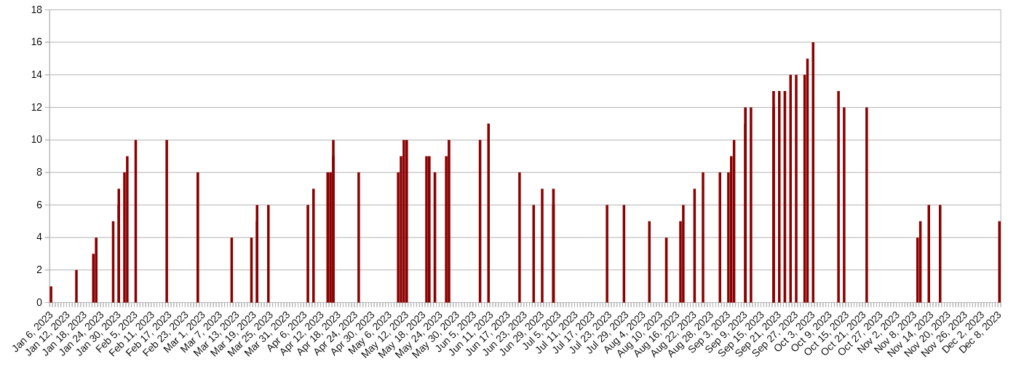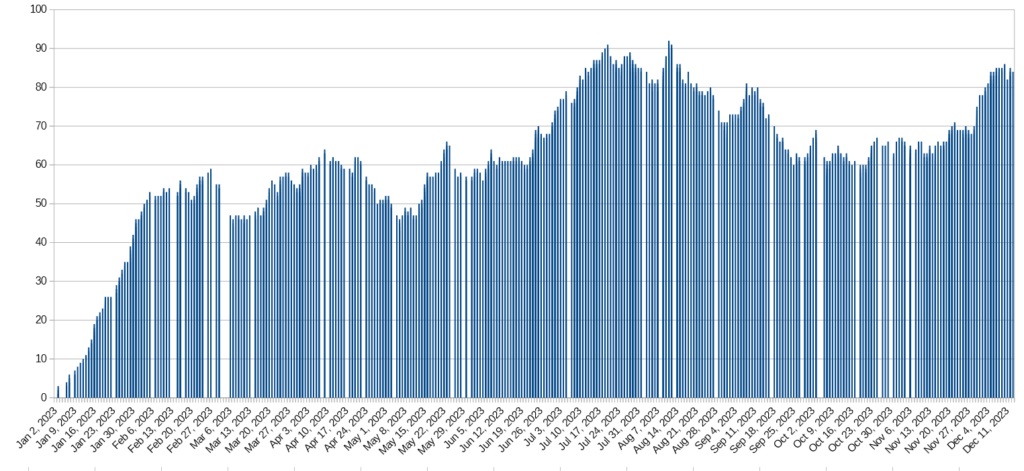On September 6, 2023, TDCJ announced a statewide lockdown that it excused by claiming the agency was addressing a rise in contraband and increase in the number of homicides. Persons we are in contact with on the inside reported that they were told the lockdown was also intended to address the high rate of suicides.
TPI noted that we were hearing about a lot of deaths during the lockdown, so we wondered what the actual impact was on suicide and homicide death rates. Based on data from Texas Justice Initiative, which compiles data from custodial death reports, it seems pretty clear that the impact on death by others and self-harm increased during the lockdown, and that increase was likely caused by the adverse conditions of the lockdown.
The fiasco lasted a total of about five weeks. Some units came up earlier, and the last three units came off the lockdown on October 16, 2023, after 40 days. For our calculations, we used a 35 day rolling count of suicides and homicides starting at 0 on January 1, 2023. The table below shows a column for each suicide or homicide, and the height of the column indicates how many had occurred within the last 35 days. The 35-day death rate had not exceeded 11 prior to the lockdown, but as can clearly be seen, the rate had fallen prior to the lockdown, then exceeded 11 per 35 days just after the lockdown started, and reached the highest level, 16 per 35 days, during the lockdown. The rate then showed a distinct drop after the lockdown ended.

We should also compare other deaths to see how those correlate. In the TJI data, deaths are classified as Natural/Illness, Accidental, Alcohol/Drug Related, Suicide, Homicide, and Other. The following chart shows all deaths except those recorded as suicide and homicide. Here we can see what one would expect, that those deaths increase as the summer heat begins, then except for a lesser increase in mid-September, generally fall through the lockdown, rising again toward the end of the year. So there is a mostly inverse correlation between the suicide/homicide rates and the other death rates. That lends support to the interpretation of the higher suicide/homicide death rates being influenced by the lockdown because if there were other influencing factors such as contagions, that should have shown up in the more general death rates.

The control of contraband, although not exactly insignificant, was only a drop in the ocean of contraband known to exist on the units. TDCJ bragged about finding 584 cell phones (that’s less than six per unit, a mostly insignificant number), $576 in currency (it’s pretty laughable really that TDCJ brags about finding less than $6 per unit, each of which houses an average of about 1300 people), and an essentially miniscule amount of the most prominent drugs, K2 and meth. Every account we have heard is that the lockdown did nothing to curb the presence of K2 in the units, except possibly give the staff bringing it in during that time—visitation was suspended and pretty much all mail had to go to a digital scanning facility, so staff were the only sources—a monopoly on contraband trade.
Given these impacts and the likelihood that TDCJ administration knew a lockdown like this would increase self-harm, this recent statewide lockdown should be seen as nothing less than intentional abuse of the most vulnerable persons in state custody.